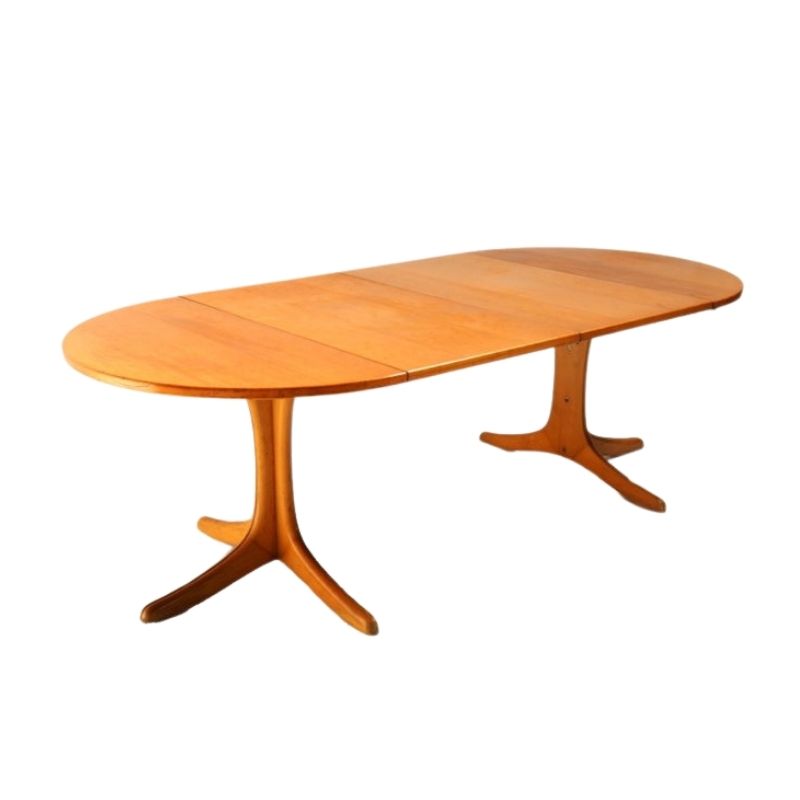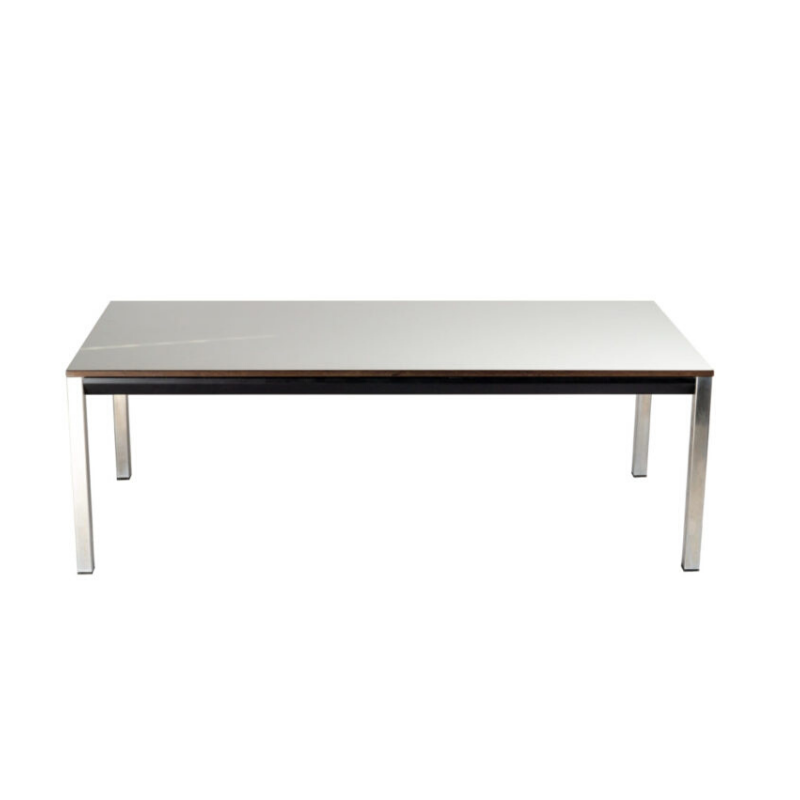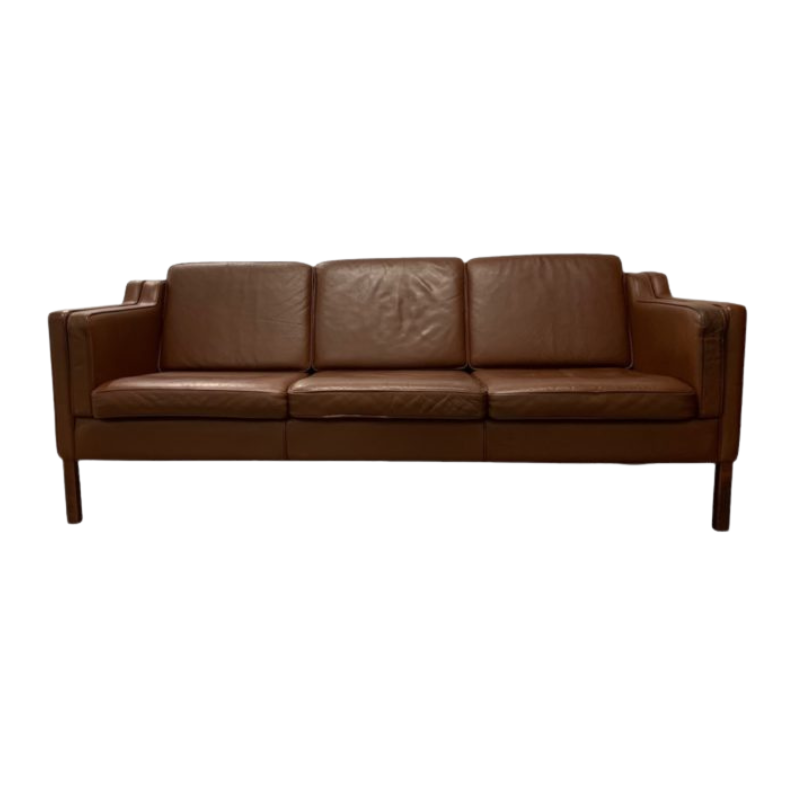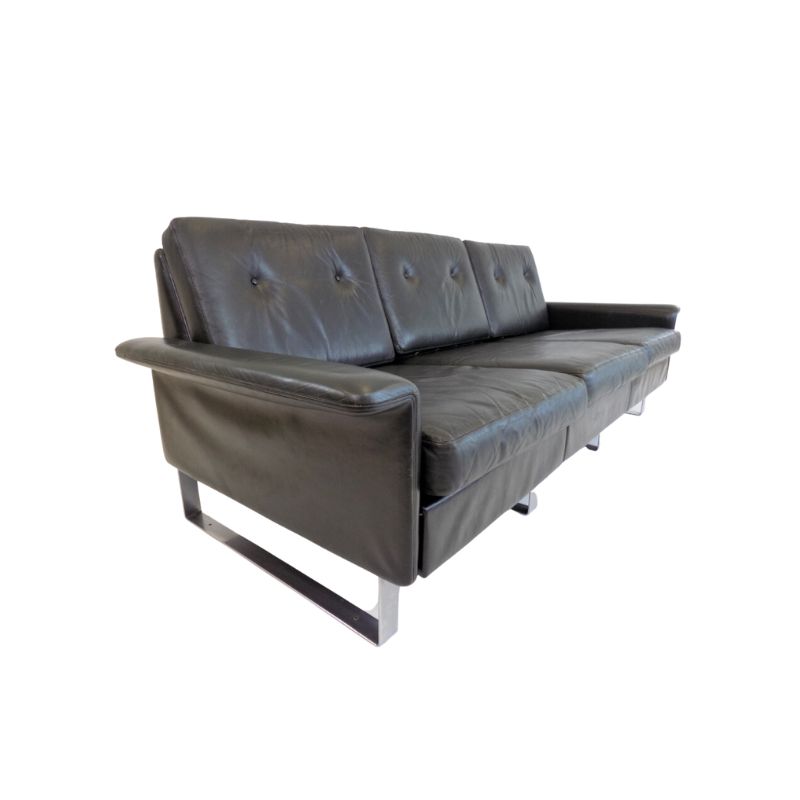very interesting
The Villa Tugendhat, a functionalist 0th century UNESCO site. The city of Brno is considering whether or not to return the valuable architectural treasure to the children of the original owners. The Tugendhat family, who are Jewish, lost possession of the house in the late 1930s, after only eight years living there.
Radio Prague's Ilya Marritz spoke with Daniela Hammer-Tugendhat, one of the three children of Grete and Franz Tugendhat who commissioned the villa. He asked her what she thought it would take to rebuild the historic house, if and when she and her siblings get it back.
"I can't tell you about costs because one has to know very thoroughly what is needed. The point is - and this is a coincidence - that I am an art historian and my husband is an art historian, but he is also a restorer and conservationist. For many, many years he was the only restorer here at the Office for Protection of Monuments for the whole of Austria. And now he is a professor in Hildesheim [Germany]. But he has already done a lot of work on this house.
"I can understand perhaps that it seems strange for the public that the family has come now, so late. But we have in fact been working for this house for sixteen or seventeen years and have the impression that because we don't own the house, it's just without any effect. My husband made research work with his students on the surface of the house and he found that about ninety percent of the original surface is there, one has to simply restore it. And he ensured with the help of other universities including those in Vienna, Litomysl, and Hildesheim, that all the materials - metal, wood, and stone - were examined. The problem now is that architects are needed but there are no restorers and they don't know about restoration work."
The Villa Tugendhat, a functionalist family home designed by Ludwig Mies van der Rohe, is the Czech Republic's only 20th century UNESCO site. The city of Brno is considering whether or not to return the valuable architectural treasure to the children of the original owners. The Tugendhat family, who are Jewish, lost possession of the house in the late 1930s, after only eight years living there.
Danielle Hammer-Tugendhat (left) and Ruth Tugendhat, photo: CTK Danielle Hammer-Tugendhat (left) and Ruth Tugendhat, photo: CTK
Radio Prague's Ilya Marritz spoke with Daniela Hammer-Tugendhat, one of the three children of Grete and Franz Tugendhat who commissioned the villa. He asked her what she thought it would take to rebuild the historic house, if and when she and her siblings get it back.
part 2
understand you were in Brno this week with your brother and sister?
"No, only with my sister, my brother is in Brazil. But he gave us a letter and she [her sister] read the letter. It more or less says that he thinks that this house was stolen by the Nazis and then confiscated by the Communists. So, the house was stolen and the city now has the opportunity and the chance to somehow give this house back. He [her brother] was made an honorary citizen by the city of Brno a few years ago and he said in his letter that he is very proud of this. He believes the city now has a moral obligation to give this house back."
part 3
understand your brother is the eldest, so did he grow up in the villa?
"Yes my brother grew up in the villa. He lived there the first eight years of life. I didn't, I was born in Caracas in Venezuela. My family had to emigrate and they first went to Switzerland. But in 1941 they feared that Hitler would march into Switzerland and then they emigrated to Venezuela, to Caracas, where they stayed for ten years, and then they went back to Switzerland again."
And now you live in Vienna, not so far away, which is kind of amazing.
"Yes, I went to study in Vienna and I stayed and really like living in Vienna."
When was the first time that you visited the villa personally?
"I went to the villa in 1969 with my mother. In 1969 and 1970 there were two international conferences organized by Czechs, especially by a Czech architect called Frantisek Kalibuda. At that time the house was a children's hospital. And the architects got in contact with my mother, who lived in Switzerland at the time, and they tried to get the house open to the public and have it renovated.
"This was the first time my mother went back to the house and that was really very exciting because she saw so many people she knew and she didn't know if they were alive and so on. She went there, and I saw her go to this big hall to this onyx wall and she touched this onyx wall, and - as if to a human being - she said: 'I didn't think I would ever see you again!'. And then she held a speech in Czech, which was a very important document because she knew so many things nobody else knew anymore. And she wanted two things - firstly that the villa should be open to the public, because it's such an important monument, and secondly that it's well restored.
"Then, unfortunately, she was killed by a car at the end of 1970. So this process didn't continue. She wanted to write a book about this house with Frantisek Kalibuda, and she was willing to give all the information she had to facilitate the restoration. So I somehow feel like continuing what she couldn't do anymore and I feel responsible for the house."
Photo: Jana Sustova Photo: Jana Sustova
How do you feel when you're inside the house?
"I love the house and every time I go there somehow I love it more. For me it is really the most beautiful house of modern architecture. And one of the most beautiful houses' rooms I know. That's why I think it would really be worthwhile to restore it properly."
There would be no temptation for you to live there if your family does get it back?
"No, not at all, no. I will never live there. For me, it is absolutely clear that this house is so important that it has to stay open to the public. This is absolutely clear.
When you were growing up, when you were a girl, did your parents talk about the house?
tugendhat chair
Details
Designer: Mies van der Rohe, Ludwig
Date of Design: 1929
Date of Manufacture: 1965-1976
Model Number: 254
Materials: Solid stainless steel frame; leather straps; leather upholstery over foam cushions
Dimensions: W 29 3/4", D 27 1/4", H 32 3/4"
This chair was designed for a house Mies designed for Grete and Fritz Tugendhat in Brno, Czechoslovakia. Knoll acquired the rights to manufacture versions with and without arms from Mies van der Rohe in 1948.
Doesn't look like they do,...
Doesn't look like they do, which is a shame, considering its so good. I'm sure any used ones that turn up will be obscenely expensive.
I have some metal work skills and was wondering if anyone knows how flat bar furniture is produced, bent like tube using bending wheels or bent in hydraulic presses with "moulds"?
If you need any help, please contact us at – info@designaddict.com









